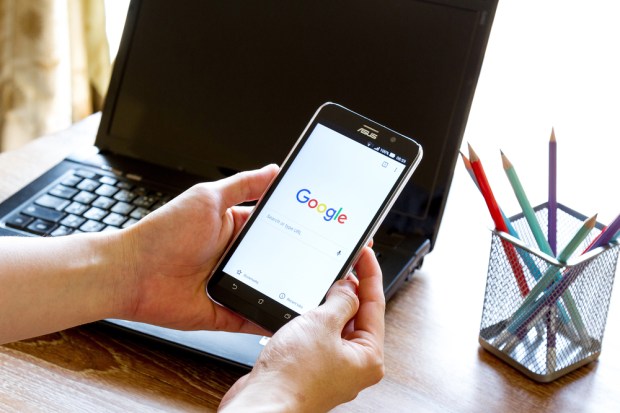Google Launches Swipeable Carousel In Latest Move In eCommerce Race With Amazon

When it comes to finding information, consumers “Google” it. When it comes to finding products, customers “Amazon” it. Though the eCommerce giant has yet to turn its name into a verb, that’s how customers are treating it, with 55 percent turning to Amazon — not Google — as their first shopping search resource.
However, Google’s not letting those shoppers go easily. Last month, it updated its Google Shopping features to better compete with Amazon. Now, the search engine has introduced a swipeable carousel and filters in its mobile product card unit ads, replacing the static list hierarchy with a more visual and dynamic presentation, Search Engine Land reported.
The format worked for Google’s price extensions, which debuted in July 2016. In November, the platform moved from a product list to a swipeable card format showing pricing information about products and services in mobile ads. Advertisers were given the option to choose a relevant header in the Ad Extensions tab of the web interface, including brands, events, neighborhoods, services and product categories.
With the new Google Shopping product cards, users who select a filtering option — for example, color, capacity or connectivity on a Samsung Galaxy S6, among other differentiators — will be taken to the product’s overview page on Google Shopping. Shoppers can also input a very specific search — such as “Cuisinart coffee maker DCC-3200” — and view pricing from different vendors, search for the product in a specific color or explore similar appliances by the same manufacturer.
Last month, Google rolled out its Google Manufacturer Center. The free tool allows manufacturers to include more content — including written descriptions, images and videos — in product profiles. The search engine will then favor those products in its shopping search results. Google claimed on the Manufacturer Center sign-up page that brands utilizing the offering would see 8 percent more impressions and 10 percent more clicks.
Google’s investments in shopping features are not an eleventh-hour tactic. The writing has been on the wall for quite some time regarding competition with Amazon, and certain recent numbers could suggest that Google has been holding its own in the race, RetailDIVE reported.
Google Shopping clicks and orders increased by 171 percent in the first quarter of 2016, raising the return on advertising spending by 23 percent. Year-over-year click growth reached 98 percent. Mobile impressions grew 130 percent that quarter, and 29 percent of Google Shopping revenues came from mobile devices over the course of 2016. For the first time, retailers spent more on Google Shopping display ads than on text ads.
But then there’s that pesky 55 percent statistic. Fifty-five percent of online shoppers turn to Amazon first, according to a 2016 Bloomreach survey, up 11 percent from the previous year. Meanwhile, only 28 percent began their shopping quest with a search engine, down from 34 percent in 2015.
A more recent survey by UPS showed different statistics but similar trends, Business Insider reported. Thirty-eight percent of U.S. online shoppers said they started at a marketplace like Amazon or eBay, and 29 percent said Amazon was their first stop. A similar percentage went straight to a specific retailer’s website. Only half as many began their search with Google or another search engine.
In online retail, Amazon has an advantage that Google can’t buy — at least, not with money, though Google may earn it over time. That is the eCommerce giant’s years of customer data, which the company uses to deliver insightful, personalized product recommendations and information.
With the new Google Shopping upgrade, the search engine is on its way to delivering a similar experience. Manufacturers will be able to better represent their products by writing their own descriptions, hopefully resonating more with customers.
Google has another potential advantage, Business Insider notes, if it can leverage it. A growing number of consumers are starting to place shopping orders through their smart home speakers using voice capabilities, and the Google Assistant performs better than Amazon’s Alexa. Now is the time for Google to seize that advantage and run with it — before the Echo finds its place in every U.S. home.
But Google still has a long way to go, and only time will tell whether it can catch up to its competitor in Amazon.
